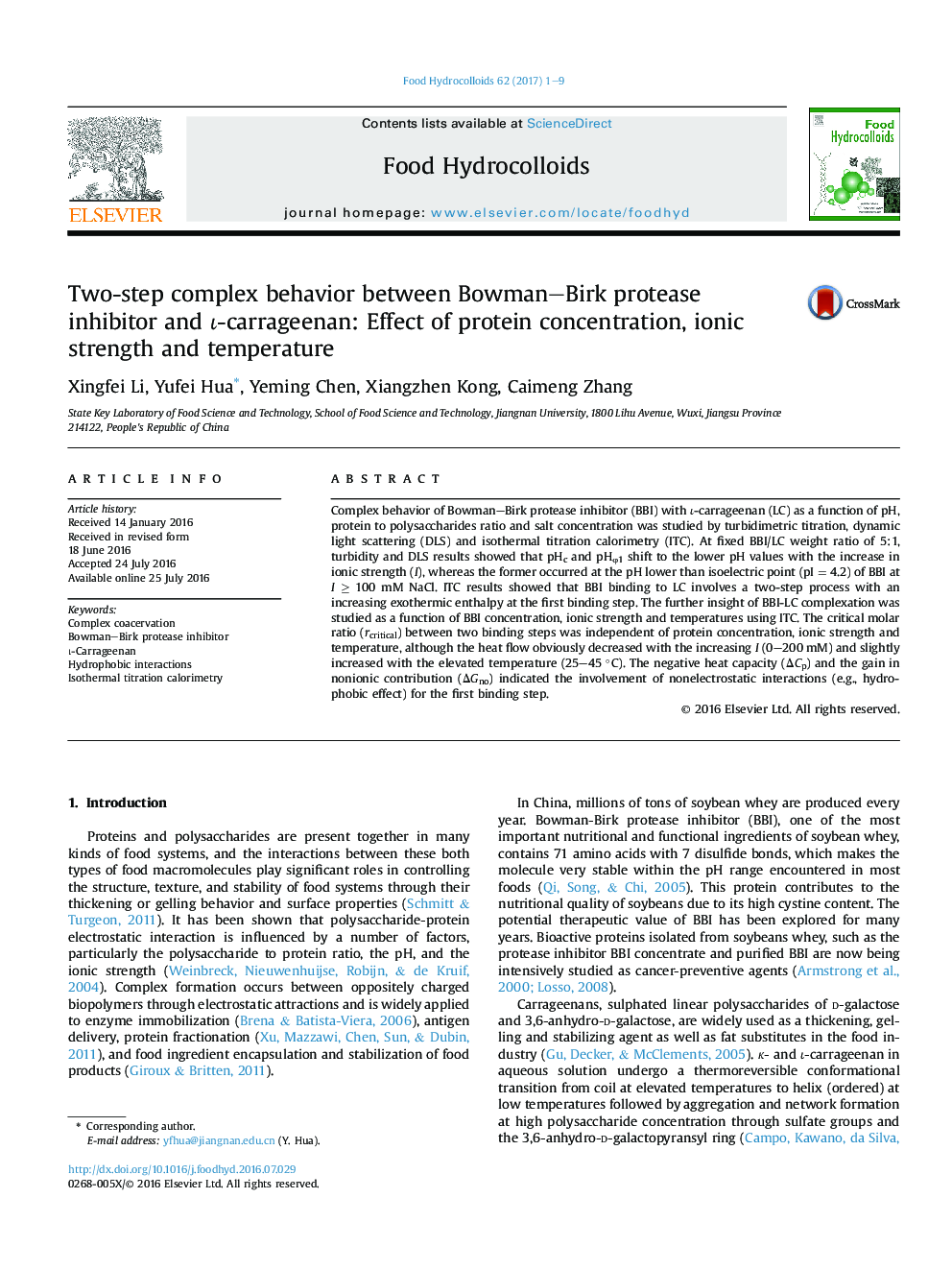| کد مقاله | کد نشریه | سال انتشار | مقاله انگلیسی | نسخه تمام متن |
|---|---|---|---|---|
| 603994 | 1454415 | 2017 | 9 صفحه PDF | دانلود رایگان |
• At high ionic strength, pHc occurred at the pH lower than isoelectric point of BBI.
• The binding of BBI to ι-carrageenan formed a two-step binding.
• The presence of nonelectrostatic interactions at the first binding step was proved.
• rcritical was independent of protein concentration, ionic strength and temperature.
Complex behavior of Bowman–Birk protease inhibitor (BBI) with ι-carrageenan (LC) as a function of pH, protein to polysaccharides ratio and salt concentration was studied by turbidimetric titration, dynamic light scattering (DLS) and isothermal titration calorimetry (ITC). At fixed BBI/LC weight ratio of 5:1, turbidity and DLS results showed that pHc and pHφ1 shift to the lower pH values with the increase in ionic strength (I), whereas the former occurred at the pH lower than isoelectric point (pI = 4.2) of BBI at I ≥ 100 mM NaCl. ITC results showed that BBI binding to LC involves a two-step process with an increasing exothermic enthalpy at the first binding step. The further insight of BBI-LC complexation was studied as a function of BBI concentration, ionic strength and temperatures using ITC. The critical molar ratio (rcritical) between two binding steps was independent of protein concentration, ionic strength and temperature, although the heat flow obviously decreased with the increasing I (0–200 mM) and slightly increased with the elevated temperature (25–45 °C). The negative heat capacity (ΔCp) and the gain in nonionic contribution (ΔGno) indicated the involvement of nonelectrostatic interactions (e.g., hydrophobic effect) for the first binding step.
Figure optionsDownload as PowerPoint slide
Journal: Food Hydrocolloids - Volume 62, January 2017, Pages 1–9
